ARTIST MONOGRAPHS
|
|
in stock $75.00 Free Shipping UPS GROUND IN THE CONTINENTAL U.S. |
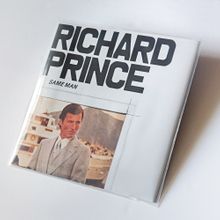 Richard Prince: Same Man
Richard Prince: Same Man
Published by Louisiana Museum of Modern Art.
Edited by Malou Wedel Bruun, Anders Kold. Text by Nancy Spector, Anders Kold.
For aficionados of Richard Prince (born 1949) and of the possibilities of the book form, this unique exhibition catalog is an exclusive three-in-one kind of publication. Designed in the dimensions of a 12-by-12-inch LP record and housed in a plastic sleeve, when unfolded it transforms into a two-sided (one English, one Danish) poster with a richly illustrated collage of works by Prince from across his career (including his famous "rephotographs"), plus two in-depth texts on Prince’s oeuvre by the curators Nancy Spector and Anders Kold.
A defining figure of the Pictures Generation, Prince is famed for his radical acts of appropriation, which have taken many turns across the course of his five-decade career. His visual world, encapsulated in this innovatively designed volume, offers a remarkably consistent portrait of late 20th-century America.
PUBLISHER
Louisiana Museum of Modern Art
BOOK FORMAT
Special edition, 12 x 12 in. / poster / 22 color / 3 bw.
PUBLISHING STATUS
Pub Date 5/16/2023
Active
DISTRIBUTION
D.A.P. Exclusive
Catalog: FALL 2023 p. 78
PRODUCT DETAILS
ISBN 9788793659612 SDNR40
List Price: $35.00 CAD $50.50 GBP £35.00
AVAILABILITY
In stock
in stock $35.00 Free Shipping UPS GROUND IN THE CONTINENTAL U.S. |
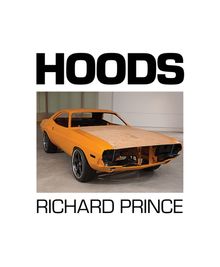 Richard Prince: Hoods
Richard Prince: Hoods
1988–2013
Published by Fulton Ryder.
Created by the artist Richard Prince (born 1949) in parallel to a major survey show, Hoods is both a monograph and an artist’s book focused on a celebrated collection of painted sculptures made from 1988 through 2013. Archival photographs in the book document the evolution of the Hoods, cataloging both the artworks and Richard Prince’s mythical “Body Shop” and the destroyed “Second House” in Upstate New York.
In an interview with photographer Larry Clark, Prince stated that “With the Hoods, I wanted to paint something that was already painted.” From this simple act of conceptual appropriation, Prince evolved a massive body of work that engages deeply with the vernacular design tradition of the customized American muscle car. Taken all together, the sculptures, the upstate Body Shop and Prince’s own photo-documentation evoke both ambiguous nostalgia as well as feelings of absence and loss, perhaps best expressed in a sampling of the artwork titles: Almost Grown; American Place; Folksongs; Vanishing Point.
PUBLISHER
Fulton Ryder
BOOK FORMAT
Hardcover, 9.5 x 11.5 in. / 179 pgs / 170 color.
PUBLISHING STATUS
Pub Date 6/7/2022
Active
DISTRIBUTION
D.A.P. Exclusive
Catalog: FALL 2022 p. 88
PRODUCT DETAILS
ISBN 9798985236811 TRADE
List Price: $75.00 CAD $104.00 GBP £60.00
AVAILABILITY
Out of stock
STATUS: Out of stock Temporarily out of stock pending additional inventory. |
 Richard Prince: New Paintings
Richard Prince: New Paintings
Published by Fulton Ryder.
Richard Prince (born 1949) continues his revival of the Fulton Ryder imprint with an artist’s book that is both a monograph of new artworks and an expansive written statement on art history, personal biography and the contemporary impulse to create self-images. At first glance, the New Paintings are in a similar vein as Prince's New Portraits. However, unlike that series, the New Paintings focuses on portraits of painters painting on Instagram, very often with back to the camera, facing away from the viewer. The resulting images are ambiguously manipulated; the series is self-described as an act of “social science fiction.” The image captions, integral to the artwork, contain a dense “Bird Talk” text, including ambiguous autobiography and art history commentary.
Joan Katz offers some explanation in a comment found in a New Painting, stating: “Deep Nostalgia. Legitimate Doubts. Safeguards to prevent misuse. Digital imitation. Resemblance without manipulations. Skilled impersonations. Staged illusions. Imitation of Life (the sequel). It’s difficult to know if it’s new or just another resurrection. #post_place.”
PUBLISHER
Fulton Ryder
BOOK FORMAT
Clth, 9 x 12.5 in. / 377 pgs / 370 color.
PUBLISHING STATUS
Pub Date 9/13/2022
Active
DISTRIBUTION
D.A.P. Exclusive
Catalog: FALL 2022 p. 88
PRODUCT DETAILS
ISBN 9798985236804 TRADE
List Price: $75.00 CAD $104.00 GBP £60.00
AVAILABILITY
In stock
in stock $75.00 Free Shipping UPS GROUND IN THE CONTINENTAL U.S. |
 Richard Prince: Super Group
Richard Prince: Super Group
Published by Holzwarth Publications.
Text by Richard Prince.
While Richard Prince (born 1949) is most often discussed for his strategies as an appropriation artist—from the Marlboro cowboys in the 1980s to the Instagram portraits today—it is his own work as a painter that stands at the center of his approach: starting with paintings of jokes and cartoons, following up with, among other things, nurses and cowboys taken from the covers of dime novels, and freewheeling riffs on Picasso and de Kooning.
For his extensive new series Super Group, Prince uses objects loaded with meaning: the inner sleeves of vinyl records, which he collages on canvas and then overpaints with band names, abstract washes and funny figures. Richard Prince: Super Group presents 51 works in this new series, engaging with the question of how we define ourselves by our choices of objects, images and music.
PUBLISHER
Holzwarth Publications
BOOK FORMAT
Hardcover, 11.5 x 14 in. / 92 pgs / 61 color.
PUBLISHING STATUS
Pub Date 6/12/2018
Active
DISTRIBUTION
D.A.P. Exclusive
Catalog: FALL 2018 p. 144
PRODUCT DETAILS
ISBN 9783947127016 FLAT40
List Price: $65.00 CAD $87.00
AVAILABILITY
In stock
in stock $65.00 Free Shipping UPS GROUND IN THE CONTINENTAL U.S. |
 Richard Prince: It's a Free Concert
Richard Prince: It's a Free Concert
Published by Kunsthaus Bregenz.
Edited by Yilmaz Dziewior. Text by Paul Black, Yilmaz Dziewior, Richard Prince, Kerstin Stakemeier.
PUBLISHER
Kunsthaus Bregenz
BOOK FORMAT
Hardcover, 9.25 x 12 in. / 256 pgs / illustrated throughout.
PUBLISHING STATUS
Pub Date 3/24/2015
Out of print
DISTRIBUTION
D.A.P. Exclusive
Catalog: SPRING 2015 p. 187
PRODUCT DETAILS
ISBN 9783863355869 FLAT40
List Price: $65.00 CAD $75.00
AVAILABILITY
Not available
STATUS: Out of print | 00/00/00 For assistance locating a copy, please see our list of recommended out of print specialists |
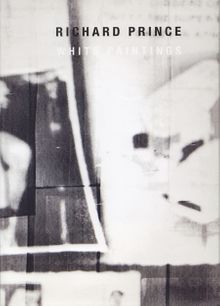 Richard Prince: White Paintings
Richard Prince: White Paintings
Published by Skarsdedt.
PUBLISHER
Skarsdedt
BOOK FORMAT
Paperback, 8.5 x 12 in. / 55 pgs / 27 color / 1 bw.
PUBLISHING STATUS
Pub Date 1/31/2014
Out of print
DISTRIBUTION
D.A.P. Exclusive
Catalog: SPRING 2014 p. 189
PRODUCT DETAILS
ISBN 9780988930001 FLAT40
List Price: $30.00 CAD $35.00
AVAILABILITY
Not available
STATUS: Out of print | 00/00/00 For assistance locating a copy, please see our list of recommended out of print specialists |
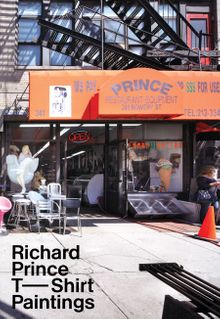 Richard Prince: T-Shirt Paintings
Richard Prince: T-Shirt Paintings
Published by JRP|Ringier.
Edited by Fabienne Stephan. Text by Jeanne Greenberg.
PUBLISHER
JRP|Ringier
BOOK FORMAT
Paperback, 7.75 x 11 in. / 72 pgs / 63 color.
PUBLISHING STATUS
Pub Date 7/31/2011
Out of print
DISTRIBUTION
D.A.P. Exclusive
Catalog: FALL 2011 p. 76
PRODUCT DETAILS
ISBN 9783037642139 SDNR30
List Price: $24.95 CAD $27.50
AVAILABILITY
Not available
STATUS: Out of print | 11/30/2012 For assistance locating a copy, please see our list of recommended out of print specialists |
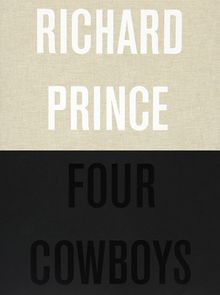 Richard Prince: Four Cowboys
Richard Prince: Four Cowboys
Published by Other Criteria Books/Murderme.
PUBLISHER
Other Criteria Books/Murderme
BOOK FORMAT
Clth, 11.75 x 15 in. / 32 pgs / illustrated throughout.
PUBLISHING STATUS
Pub Date 9/30/2010
Out of stock indefinitely
DISTRIBUTION
D.A.P. Exclusive
Catalog: SPRING 2015 p. 208
PRODUCT DETAILS
ISBN 9781906957025 TRADE
List Price: $90.00 CAD $120.00 GBP £78.00
AVAILABILITY
Not available
STATUS: Out of stock indefinitely. |
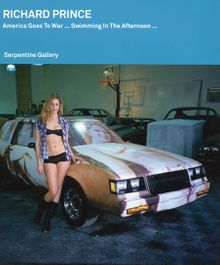 Richard Prince: America Goes to War, Swimming in the Afternoon
Richard Prince: America Goes to War, Swimming in the Afternoon
Published by Walther König, Köln.
PUBLISHER
Walther König, Köln
BOOK FORMAT
Paperback, 8.75 x 10.25 in. / 128 pgs / 113 color.
PUBLISHING STATUS
Pub Date 3/1/2009
Out of print
DISTRIBUTION
D.A.P. Exclusive
Catalog: SPRING 2009 p. 72
PRODUCT DETAILS
ISBN 9783865604934 TRADE
List Price: $45.00 CAD $55.00
AVAILABILITY
Not available
STATUS: Out of print | 11/28/2010 For assistance locating a copy, please see our list of recommended out of print specialists |
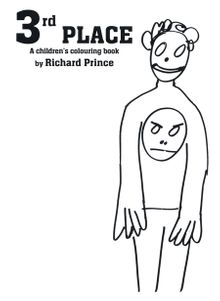 Richard Prince: 3rd Place
Richard Prince: 3rd Place
A Children's Colouring Book
Published by Walther König, Köln.
PUBLISHER
Walther König, Köln
BOOK FORMAT
Paperback, 8.5 x 10.75 in. / 82 pgs / 72 bw.
PUBLISHING STATUS
Pub Date 9/1/2008
Out of print
DISTRIBUTION
D.A.P. Exclusive
Catalog: SPRING 2009 p. 184
PRODUCT DETAILS
ISBN 9783865604927 TRADE
List Price: $30.00 CAD $35.00
AVAILABILITY
Not available
STATUS: Out of print | 00/00/00 For assistance locating a copy, please see our list of recommended out of print specialists |
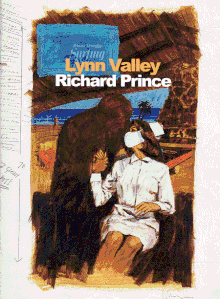 Richard Prince: Lynn Valley 1
Richard Prince: Lynn Valley 1
Published by Walther König/Bywater Bros. Ed./Presentation House.
PUBLISHER
Walther König/Bywater Bros. Ed./Presentation House
BOOK FORMAT
Paperback, 7.75 x 10.5 in. / 46 pgs / 46 color.
PUBLISHING STATUS
Pub Date 7/1/2007
Active
DISTRIBUTION
D.A.P. Exclusive
Catalog: FALL 2007 p. 157
PRODUCT DETAILS
ISBN 9780920293720 FLAT40
List Price: $35.00 CAD $47.50
AVAILABILITY
In stock
in stock $35.00 Free Shipping UPS GROUND IN THE CONTINENTAL U.S. |
 Richard Prince
Richard Prince
Published by Guggenheim Museum Publications.
Text by Nancy Spector, Glenn O'Brien, Jack Bankowsky.
Highlighting key examples from the all the major series of Prince's oeuvre, this fully illustrated volume also debuts works created specifically for the exhibition. It features a critical overview by the Guggenheim Museum's Nancy Spector and an essay by Artforum Editor-at-Large Jack Bankowsky, which discusses Prince's environmental installations, including the Spiritual America Gallery, his First House and Second House, and his Library in Upstate New York. In addition, cultural commentator Glenn O'Brien contributes a series of interviews with popular culture initiators like Annie Proulx, Phyllis Diller, John Waters, Michael Ovitz, Kim Gordon and Robert Mankoff, among many others, providing a composite portrait of Prince's themes alongside an insider's view of the formation of mass-cultural taste.
PUBLISHER
Guggenheim Museum Publications
BOOK FORMAT
Hardcover, 8 x 11 in. / 368 pgs / 438 color.
PUBLISHING STATUS
Pub Date 10/1/2007
Out of print
DISTRIBUTION
D.A.P. Exclusive
Catalog: FALL 2007 p. 169
PRODUCT DETAILS
ISBN 9780892073634 TRADE
List Price: $60.00 CAD $70.00
AVAILABILITY
Not available
STATUS: Out of print | 00/00/00 For assistance locating a copy, please see our list of recommended out of print specialists |
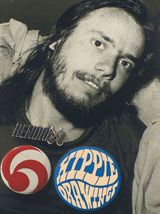 Richard Prince: Hippie Drawings
Richard Prince: Hippie Drawings
Published by Hatje Cantz.
Text by Richard Brautigan.
PUBLISHER
Hatje Cantz
BOOK FORMAT
Hardcover, 9 x 12 in. / 104 pgs / 100 color.
PUBLISHING STATUS
Pub Date 4/1/2006
Out of print
DISTRIBUTION
D.A.P. Exclusive
Catalog: SPRING 2006 p. 121
PRODUCT DETAILS
ISBN 9783775717335 TRADE
List Price: $40.00 CAD $50.00
AVAILABILITY
Not available
STATUS: Out of print | 5/18/2011 For assistance locating a copy, please see our list of recommended out of print specialists |
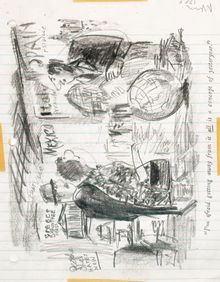 Richard Prince: Jokes and Cartoons
Richard Prince: Jokes and Cartoons
Published by JRP|Ringier.
Edited by Beatrix Ruf.
PUBLISHER
JRP|Ringier
BOOK FORMAT
Paperback, 8.5 x 11 in. / 216 pgs / 107 color.
PUBLISHING STATUS
Pub Date 8/15/2006
Active
DISTRIBUTION
D.A.P. Exclusive
Catalog: FALL 2006 p. 109
PRODUCT DETAILS
ISBN 9783905701838 TRADE
List Price: $35.00 CAD $47.50 GBP £21.00
AVAILABILITY
In stock
in stock $35.00 Free Shipping UPS GROUND IN THE CONTINENTAL U.S. |
 Richard Prince: Man
Richard Prince: Man
Published by JRP|Ringier.
Artwork by Richard Prince.
PUBLISHER
JRP|Ringier
BOOK FORMAT
Paperback, 7.75 x 11 in. / 88 pgs / 88 color.
PUBLISHING STATUS
Pub Date 3/15/2005
Out of print
DISTRIBUTION
D.A.P. Exclusive
Catalog: SPRING 2005 p. 75
PRODUCT DETAILS
ISBN 9782940271597 TRADE
List Price: $35.00 CAD $40.00
AVAILABILITY
Not available
STATUS: Out of print | 11/25/2008 For assistance locating a copy, please see our list of recommended out of print specialists |
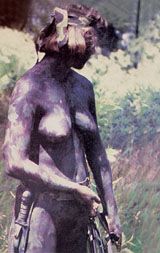 Richard Prince: Women
Richard Prince: Women
Published by Hatje Cantz.
Edited by Shaun Caley Regen.
PUBLISHER
Hatje Cantz
BOOK FORMAT
Hardcover, 7.25 x 11 in. / 176 pgs / 196 color
PUBLISHING STATUS
Pub Date 4/2/2004
Out of print
DISTRIBUTION
D.A.P. Exclusive
Catalog: FALL 2004
PRODUCT DETAILS
ISBN 9783775714518 TRADE
List Price: $40.00 CAD $50.00
AVAILABILITY
Not available
STATUS: Out of print | 8/1/2007 For assistance locating a copy, please see our list of recommended out of print specialists |
 Richard Prince: American English
Richard Prince: American English
Published by Walther König, Köln.
Edited by Sadie Coles.
PUBLISHER
Walther König, Köln
BOOK FORMAT
Paperback, 6 x 8.75 in. / 134 pgs / 124 color
PUBLISHING STATUS
Pub Date 8/2/2003
Out of print
DISTRIBUTION
D.A.P. Exclusive
Catalog: SPRING 2004
PRODUCT DETAILS
ISBN 9783883757179 SDNR30
List Price: $35.00 CAD $40.00
AVAILABILITY
Not available
STATUS: Out of print | 8/15/2005 For assistance locating a copy, please see our list of recommended out of print specialists |
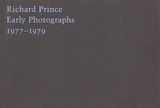 Richard Prince: Early Photographs 1977-1979
Richard Prince: Early Photographs 1977-1979
Published by Skarstedt Fine Art.
With selected writings by Richard Prince.
PUBLISHER
Skarstedt Fine Art
BOOK FORMAT
Hardcover, 12 x 8 in. / 47 pgs / 51 color
PUBLISHING STATUS
Pub Date 2/2/2002
Out of print
DISTRIBUTION
D.A.P. Exclusive
Catalog: SPRING 2002
PRODUCT DETAILS
ISBN 9780970909008 TRADE
List Price: $30.00 CAD $35.00
AVAILABILITY
Not available
STATUS: Out of print | 10/23/2003 For assistance locating a copy, please see our list of recommended out of print specialists |
Richard Prince: Paintings-Photographs
Published by Hatje Cantz.
Essays by Bernard Mendes Bürgi, Beatrix Ruf and Bruce Hainley.
PUBLISHER
Hatje Cantz
BOOK FORMAT
Slipcased, 9.75 x 12.5 in. / 402 pgs / 368 color.
PUBLISHING STATUS
Pub Date 8/2/2002
Out of print
DISTRIBUTION
D.A.P. Exclusive
Catalog: FALL 2002
PRODUCT DETAILS
ISBN 9783775791113 TRADE
List Price: $75.00 CAD $90.00
AVAILABILITY
Not available
STATUS: Out of print | 11/15/2006 For assistance locating a copy, please see our list of recommended out of print specialists |
 Richard Prince: The Girl Next Door
Richard Prince: The Girl Next Door
Published by Hatje Cantz.
Artwork by Richard Prince. Edited by Peter Noever.
PUBLISHER
Hatje Cantz
BOOK FORMAT
Paperback, 6 x 8.75 in. / 64 pgs / 64 color
PUBLISHING STATUS
Pub Date 7/2/2000
Out of print
DISTRIBUTION
D.A.P. Exclusive
Catalog: FALL 2000
PRODUCT DETAILS
ISBN 9783775709477 TRADE
List Price: $14.95 CAD $17.50
AVAILABILITY
Not available
STATUS: Out of print | 12/19/2005 For assistance locating a copy, please see our list of recommended out of print specialists |

